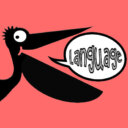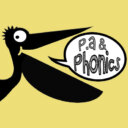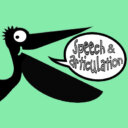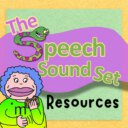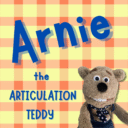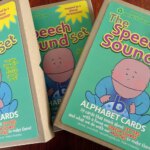Emotions Included In Your Pack
Happy Sad Scared Angry Disgusted Surprised Annoyed Jealous Frustrated Embarrassed Proud Brave Calm Excited Upset Furious Silly Creative Amazed Sorry Loved Kind Proud Left out
On the back some are described as “a nice feeling” or “not a nice feeling”. This is a simple way to explain that some feelings are pleasant to experience – and some are not pleasant to experience… but remember ALL EMOTIONS ARE OK TO FEEL!
Which ones to introduce first?
Start with the basics – Happy, Sad, Scared, Angry – and then it’s up to you!
Emotions are listed below in ALPHABETICAL ORDER. This does not reflect the order in which you should introduce them. It is simply so you can quickly find the material relating to your current focus emotion!
Bonus Materials
Before you start downloading activities PLEASE read the GENERAL TIPS BELOW.
Don’t race through all the feelings at once.
You might choose a one or a few focus feelings for each session and continue adding more in time.
General Tips
1. Model and encourage guessing
Reading others’ emotions is guesswork after all – and this is an important pre-cursor to social skills. Be sure to use the prompts “Let’s guess… How MIGHT Coco be feeling?” and if needed, use starter phrases like “Maybe Coco is. feeling…”
2. Draw attention to different “clues” that might help to guess how Coco is feeling.
There are clues on the front of the card – and clues that you can read out on the back of the card. By looking at the picture together, you might draw attention to body language or facial expression. Have children mimic what Coco is doing. Next, is there any context that is evident in the picture? Any words that Coco has said? If so, draw attention to these. You might model the words using the voice tone that matches that emotion – and have children copy.
You will also find “clues” on the back of the card. Some of these describe the features above but there may be additional clues such as internal body senses or what Coco wants to do. For example, “Coco’s heart is thumping hard” or “Coco wants to hide”.
Accept any appropriate responses to the question “How might Coco be feeling?”
3. Acknowledge and praise any guesses
For example, for the SURPRISED card, a child might guess that “Coco is shocked/scared etc…” You might respond to “scared” by saying “Mmm… maybe… but I don’t think Coco ‘s mouth and eye-brows look scared… I wonder if maybe… Coco is feeling surprised?”
4. Reveal the focus feeling of the card
After guessing together, you can say something like “Let me find out how Coco felt here… This word says SURPRISED… Ah Coco is feeling SURPRISED in this picture.
Be sure to stick to the the word on the card. For example, if you were doing the ANGRY card, refer to Coco being ANGRY and how feeling ANGRY isn’t a nice feeling (rather than “ANGER isn’t a nice feeling”).
Use FRUSTRATED in your discussions, not FRUSTRATION.
Use HAPPY, not HAPPINESS and so on…
In other words, use the word that children is most useful for children to learn so that they can use the word in their own expression. The word should fit into the sentence; “I am feeling/I felt/ I feel _________.”
5. Use child-friendly language and adapt accordingly
On the back of the card, there is a whole lot of text. Read each sentence slowly and discuss further if needed. You may choose not to read ALL the text. At the end of each card, it usually states whether a feeling might be nice to feel or not nice to feel. With young children “nice” and “not nice” makes sense. Where the feeling is no nice, it follows on to explain “but it’s OK to feel this like this sometimes/occasionally.” This is part of normalising feelings.
Some children may not understand “occasionally”. If so, be sure to discuss this further.
Model the sentence “Coco feels/felt _______” but for some, it may sound more natural saying “Coco is/was ____________”. You can alternate the use of feel/felt and am/was.
6. Include in your teaching DEGREES of emotions.
Some emotions resources only show exaggerated versions of an emotion. With Coco’s cards, we have tried to show authentic representations. With sad, Coco doesn’t have streams of tears – to us, that’s REALLY sad. We try and encourage children to notice emotions in others (and in themselves) before they blow up into HUGE, OUT-OF-CONTROL emotions. (For those of you have done training with me, you know I also like to show degrees of emotions using the hand gestures).
7. Acknowledge that is is normal and OK to feel ANY feeling
Explain that everyone feels even the not-so-nice ones sometimes. There is a time and a place to get angry, frustrated – even jealous… but MOST of the time, it is a good idea to try and keep these not-so-nice emotions controlled. Being able to NAME an emotion, helps us do this. Having said that, there are also times when it is OK to feel out-of-control. Everyone does.
Emotional regulation is about keeping a lid on emotions. This might be the duration (how long it lasts) or the intensity (about big the emotion is).
8. Remember that some children can have different experiences with feelings and emotions
Some may be actually drawn to big emotions such as being furious. Some may feel uneasy when everyone is calm.
9. Take into account the developmental levels
In all your emotions teaching with young children, you are planting the seeds for learning. Young children’s emotional brains are still developing.
10. Consider neurodiversity
Children who are neurodivergent (autistic, ADHD) may process emotions differently from neurotypical children. You may find that they cannot easily copy facial expressions or voice tone. Accept these differences.
11. Relate the feeling to children’s own life
Some children may not be able to think of when they felt a particular way. Give it a go… but you might have to help them make the link. For example, “I noticed you looked a bit frustrated when you were trying to do that tricky puzzle this morning”.
12. Know each FOCUS FEELING before introducing it
As an educator, become confident talking about a feeling before you introduce it. Can you define it use child-friendly language? How does a child’s home culture regard this emotion?

